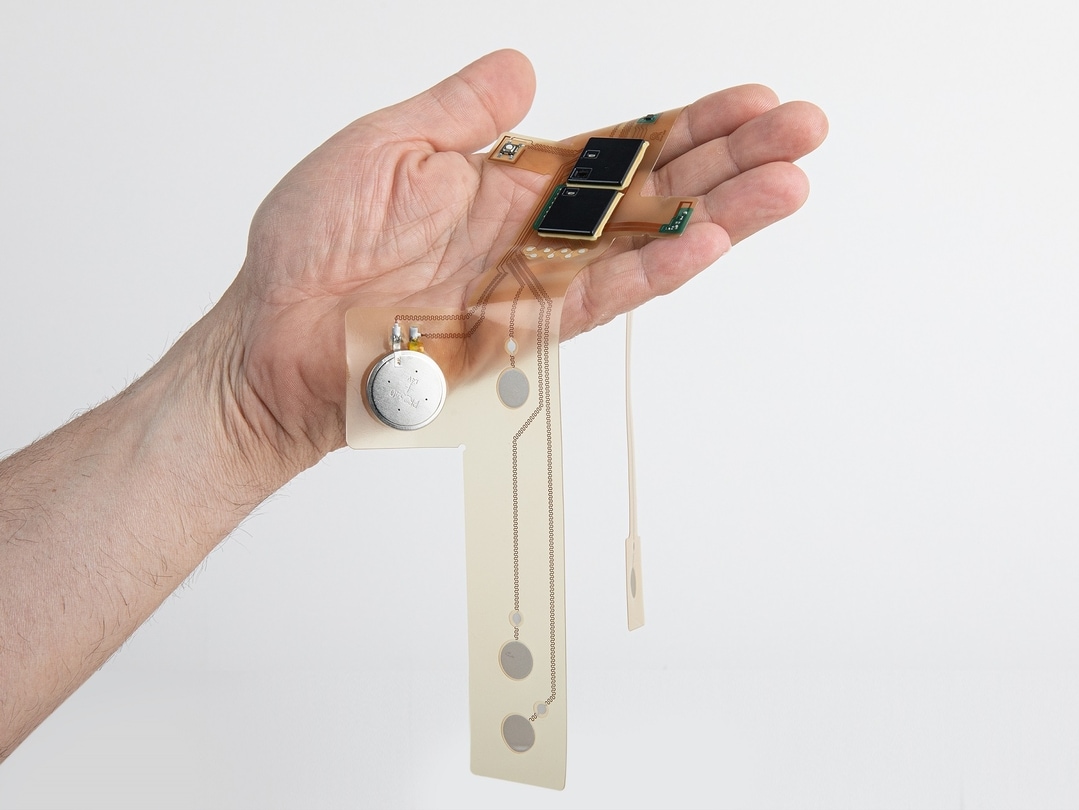- 15. August 2023
- Printed Circuit Boards
European collaborative APPLAUSE project successfully completed
Content you may also like

Würth Elektronik Circuit Board Technology was one of 31 European partners involved in carrying out the project “Advanced packaging for photonics, optics, and electronics for low-cost manufacturing in Europe” – APPLAUSE for short. The overall aim of the project was to strengthen the semiconductor value chain for the medical sector in Europe by developing new tools, methods, and processes for volume production. The project partners consisted of competence leaders from the fields of electronics packaging, optics, and photonics, together with leading equipment manufacturers and medical technology experts. The three-year project, with a total budget of EUR 34 million, was funded by ECSEL JU (Electronics Components and Systems for European Leadership Joint Undertaking) as part of the Horizon 2020 EU funding program. APPLAUSE was an innovation project of the European Commission in the field of electronics research.
Würth Elektronik Circuit Board Technology participated in the following three use cases:
Low-cost thermal imaging systems
A hybrid panel-level packaging process was developed for use in a thermal imaging camera here. Printed circuit boards formed the basis for the assembly and connection technology of the system-in-package (SiP). The main areas of development were printed circuit board technology, wire bonding and encapsulation of large optical chips.
Minimally invasive cardiac implants
A catheter was equipped with accelerometers to measure contractions of the heart in this context. Würth Elektronik Circuit Board Technology was involved in the design of the circuit boards and production of the substrates. To this end, novel ultra-flexible and rigid-flexible stackups were designed with the project partner OSYPKA AG, and the printed circuit boards were manufactured on the basis of skin-friendly substrates.
Cardiac monitoring systems
Würth Elektronik Circuit Board Technology participated in the development of an intelligent patch (smart patch) for cardiac monitoring. Two systems – a mini-patch (three electrodes, short-term monitoring) and a maxi-patch (six electrodes, longer, steady-state monitoring) were set up. Würth Elektronik Circuit Board Technology focused on designing the layout of the stretchable substrates and manufacturing them. A completely new approach to integration was developed in this work. It was based on a stretchable printed circuit board made of thermoplastic polyurethane (TPU). It was possible to make this using standard PCB production techniques, which brought many of the advantages of conventional PCB technology, such as assembly of components using pick-and-place machines. This advantage was exploited by integrating the electrical functions into a dual system-in-package (SiP) design that could be mounted directly on the flexible/stretchable PCB. Printing the electrodes directly on the flexible printed circuit board and integrating all the electronics into a textile substrate represent crucial advances in the development of medical patches for monitoring bodily functions. The high degree of miniaturization and tight integration resulted in a very unobtrusive form factor, while the stretchable PCB provided a very pliable, biocompatible substrate. In addition to Würth Elektronik Circuit Board Technology, other partners, including Fraunhofer IZM, Fraunhofer ENAS, Interuniversitair Micro-Electronica Centrum (IMEC) and Precordior OY played an important part in the implementation of this use case.
“Through the work on the APPLAUSE project, we have taken significant steps forward in the development of complete medical systems and, in particular, close-to-body applications. This is down to the synergies and excellent collaboration between the partners within the consortium. Discussions are currently being held with some of the project partners on finalizing the development after the project has been completed with the clear aim of moving on to industrial production,” is the conclusion of Dr. Alina Schreivogel, Head of the Research Center at Würth Elektronik Circuit Board Technology.